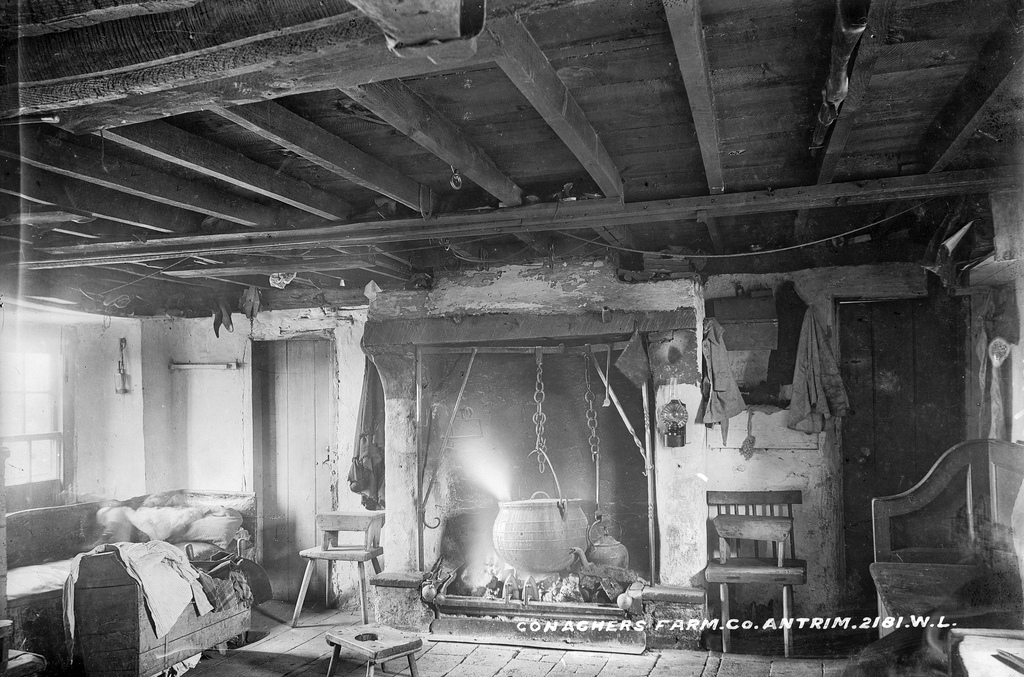The story of heating in Ireland
For centuries, the open fire or hearth was the principal means of heating and cooking in Ireland. From ancient times, wood and later peat were the main sources of fuel, and much later coal. Ranges were an improvement on open fires and in the second half of the 20th century, with central heating the preferred option for those that could afford it. Coal and peat prevailed until the 1950s, with oil and towns gas becoming popular in the 1960s, then solid fuel returning from the mid-1970s to the late 1980s, with oil and natural gas (initially from Kinsale) very much the fuels of choice for most consumers over the past 25 years. At the same time, our buildings have become better insulated and more comfortable, central heating was widely adopted by the 1980s, and our industrial processes have become more energy efficient. Looking ahead towards meeting our climate obligations, the twin priorities are to continue to passively reduce our demand for heat and to supply that heat with technologies that are smarter, cleaner, highly efficient and increasingly from renewable energy sources. This will present many choices and may involve radical changes such as, for example, a major shift to heating by means of electricity or gas and solid fuels from renewable sources.
Up to the 19th century, the need for, and means of, heat in Ireland were heavily determined by our relatively mild climate and the local availability of building materials and fuels. With growing industrialisation and trade, heat demand for our homes, industry and other buildings became increasingly dependent on imported fossil fuel in the form of coal.
The 20th century was an era of enormous expansion in economic activity, in our building stock, in the demand for heat and in the burning of imported oil and natural gas. Irish consumers have experienced considerable fluctuations in fuel choices over the decades and steady progress in the quality and efficiency of our heating technologies and our home insulation levels in particular. Coal and peat prevailed in the 1950s, oil and towns gas becoming popular in the 1960s, then solid fuel returning from the mid 1970s to the late 1980s, with oil and natural gas (initially from Kinsale) very much the fuels of choice for most consumers over the past 25 years. But as a general trend, our buildings have become better insulated, more comfortable and our industrial processes more energy efficient.
Today, space and water heating of our homes accounts for half of Ireland’s heat demand, our industry for one third and our commercial and public buildings for the remaining one fifth. The principal heating sources in non-domestic buildings are oil and gas, which in larger buildings are often through integrated heating and ventilation systems; electric heating is common in smaller buildings. 97% of homes in 2011 were centrally heated, with the preferred fuels being oil and gas. Coal and peat were first choice in only 10% of homes – a dramatic decline from the 1950s. In 2011 oil dominated in rural areas, while 54% of homes in larger towns relied on natural gas. Two out of every three homes in Dublin and Cork cities used gas. In contrast, the midlands had the highest incidence of peat and coal use. Electrical storage heating accounts for around 9% of our home heating. Wood and other renewables still account for less than 3% of heat supply to Ireland’s homes. But from a near zero level a decade ago, and driven by regulations, incentives and promotion, biomass boilers (in industry, hotels and the like), electrical heat pumps and solar water heating have been growing slowly but steadily in popularity.
Looking ahead towards meeting our climate obligations under the Paris Agreement of 2015, with the imperative to transform from a fossil fuel based to a low carbon society, the twin priorities are to continue to passively reduce our demand for heat in our homes, public services, businesses and industry, and to supply that heat with active technologies that are smarter, cleaner, highly efficient and increasingly from renewable energy sources. This will also present many choices, and may involve radical changes such as, for example, a major shift to heating by means of electricity or gas and solid fuels from renewable sources. In any event, it is likely to lead to a variety of different systems for different circumstances – dwellings versus businesses, urban versus rural, apartments versus homes.
A number of trends can be expected – in the level of demand for heat, in the sources through which we generate heat, in the infrastructure through which we deliver that heat and in the ways in which we operate and control the use of that heat. These changes will involve a major cumulative investment across our society over a period of decades, and will need to be driven by a combination of policies: regulation, incentives/ disincentives, technology development supports, and promotion. The scale of change means both a significant investment cost, and significant benefits in the form of buildings and services which will be healthier, more comfortable, more affordable to run, more productive and more environmentally sustainable.

